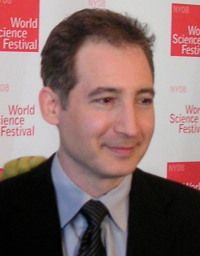Riddles of Matter, Energy, Space, and Time

It’s seems pretty clear that there is a great deal of validity to the work humankind has done, especially over the past few hundred years, in trying to decipher the riddles of matter, energy, space, and time. What really is all this stuff? Where did it come from? Why is it here? Is there a limit to our ability to perceive and understand it (especially now that it seems reality exists in more than three spatial dimensions)?
I’m happy to note that the realms of science and philosophy are re-converging into one another, after the fairly hostile divorce that lasted several centuries. In any case, Brian Greene is one of my new-found heroes. If you want a good introduction without going to a 500-page book, here’s one of his Ted Talks, in which he explains superstring theory.
